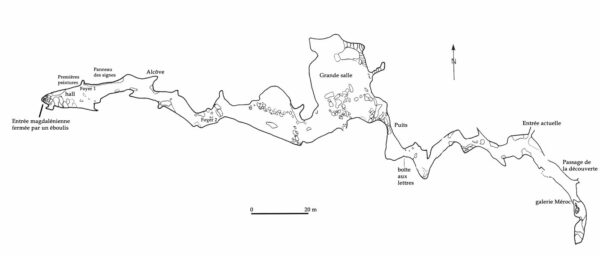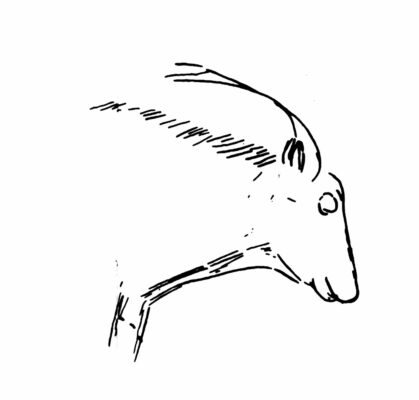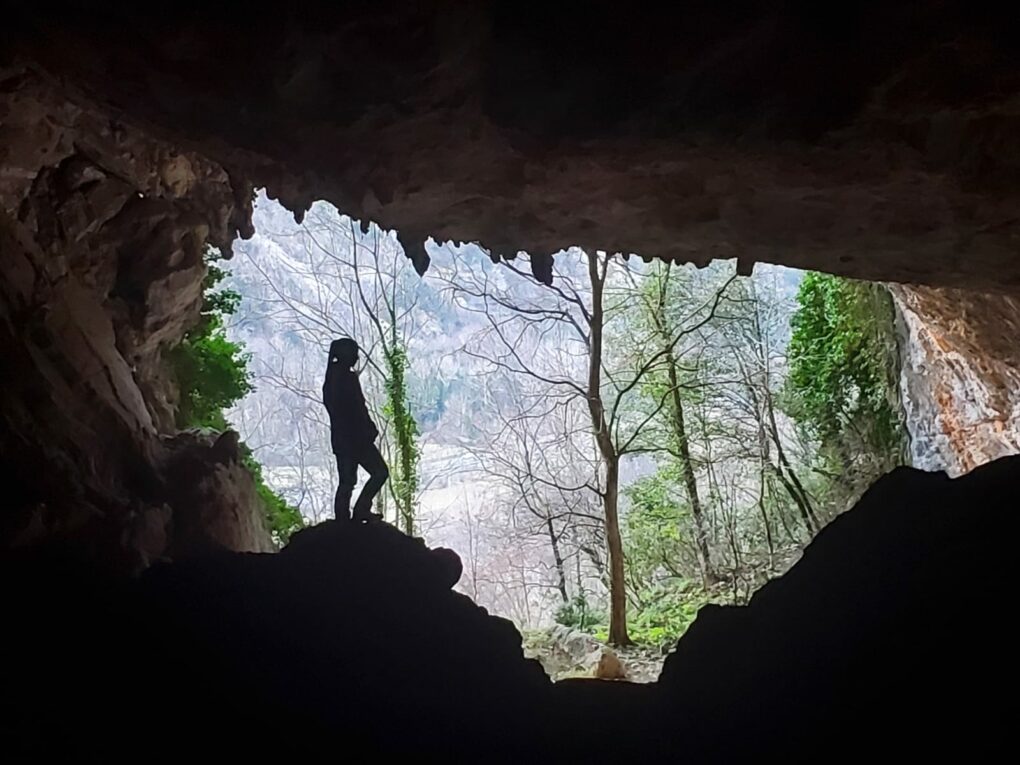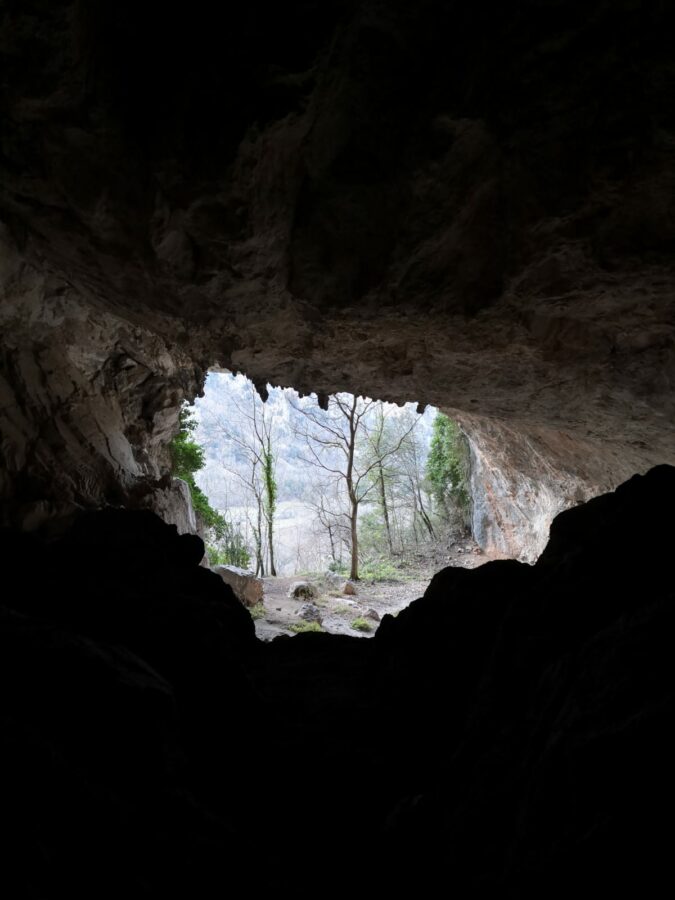Fontanet cave from the Ariège évasion campsite

The Ariège évasion campsite has its address at 2 Chemin de Fontanet… Fontanet? Why is this name so famous for prehistorians?
You follow the campsite going up the Ariege. After the campsite, no more home, nature and calm welcome you. The road runs along the Ariege river on the right bank. On the other bank through the trees, the cliffs reveal the fortified caves of Bouan, the Spoulgas.
A spulga, pronounced and also written Spoulga, (Old Occitan, from Latin Spelunca, Cave, Antre, Cave) is a fortified cave. This term refers more particularly to the fortified caves of the Pyrenees and in particular of our department of Ariège. The Tarasconnais historian Adolphe Garrigou (1802-1893) studied the fortified caves from the first half of the 19th century.
The bitumen stops shortly after an often dried stream. On the left just after a small bridge leaves a discreet path. This trail climbs along the bed of this little stream. A scarf turn takes you out of the forest cover. A beautiful terrace offers you a beautiful view of the limestone cliffs and the valley.
The still discreet path goes up to the canyon. It runs along the border of the stream. A little stiffen and he turns right. The slope is softer and goes south. A wall supports the path by passing under a small cliff. The Fontanet cave is less than a minute now, however it seems to have disappeared!
The porch is quite substantial! Rather judge: 70m wide and more than 30m high.
The entry welcomed the valley herds for many decades.
Disclose your eyes, under the vault of climbing anchors to accommodate climbers.
Let's go back to our cave! The inventory of the presence of the Magdalenian man is impressive:

12 bison, 3 horses, 4 ibex, 2 cervids, 6 anthropomorphs, signs, punctuations, cups, claviforms,…
Luc Wahl A friend of the family of David Marfaing The director of the Ariège évasion campsite is president of the Haut Sabarthes special club. Luke is a speleo enthusiast. In addition to his work as a technician at the National Forest Office, he is a judo and diving instructor in Tarascon sur Ariège.
In 1972, Luc Wahl found prehistoric drawings in a gallery. The cave reveals fingerprints of hands and feet in clay, drawings, engravings and paintings on the walls, which analyzes attach to the Magdalenian period.

The paintings dominate the first part of the network, in particular on a large panel with signs recalling those of the Niaux cave (points, lines, claviforms) and which faces a large Bison Bichrome, preceded by a horse and two goats.
40 m from the entrance, a relevance (the niche or alcove) has two horses, a engraved deer head, two bison, indeterminate tracks, punctuations and anthropomorphic figures. A engraved panel (the engravings panel) succeeds him on the left wall; It contains several bison (some arrows), a horse's head, a bouquetin avant-off and an anthropomorphic hindquarters. Some of these figures show red or black traces.
You can enter the porch. There is no trap, no wells to fall. Be careful each floor is not flat! Far from it! Your eyes are gradually getting used to darkness and you arrive at a grid that protects access to the cave. The management of prehistoric antiques had 2 grids placed to prohibit access to this fragile Magdalenian treasure.


The porch of the cave welcomed prehistoric men 15,000 years ago. The glaciers were not far away, the tundra landscapes change the almost Mediterranean vegetation of the current valley ... The animals of the time were bouquetins and bison!
The return to the campsite is made by the same route. The temperature contrast of the Fontanet cave is striking!
Sources:
https://books.openedition.org/pup/59804?lang=fr
https://www.europreart.net/cgi-bin/baserun.cgi?_cfg=rec.cfg&_fil=code%3D%22Fonta001%2222222

